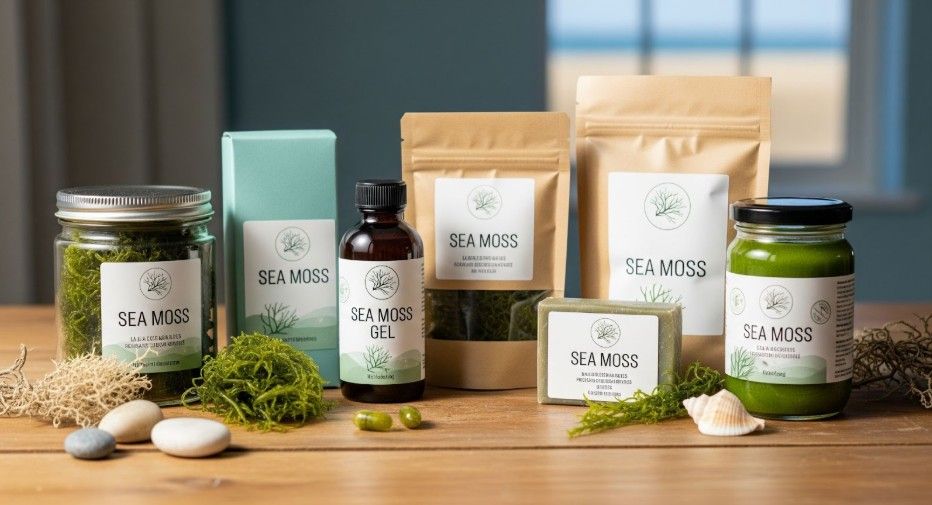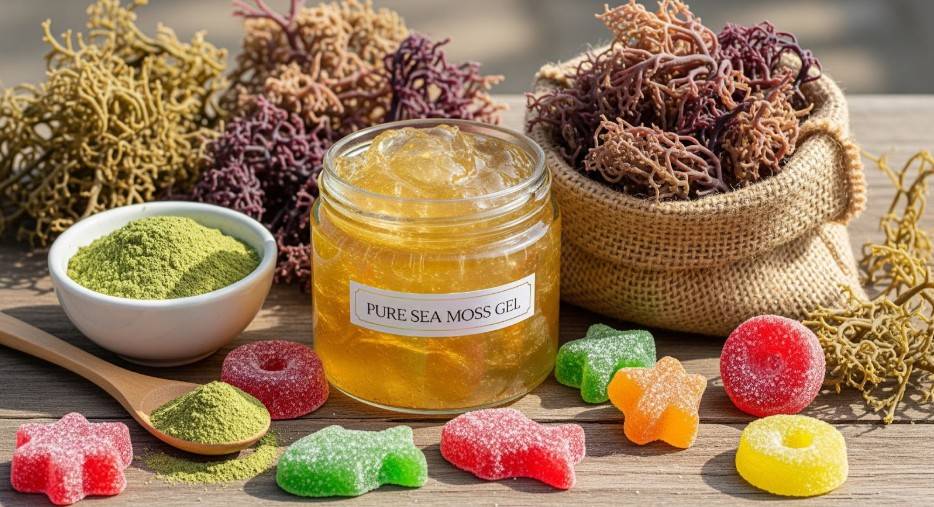
If you’ve been wondering what happens if you take sea moss everyday, the short answer is: you might gain some helpful fiber and minerals—but only if you manage iodine intake and product quality smartly. Let’s connect the dots between benefits, risks, and realistic daily use.
Before we zoom into specifics, remember that sea moss evidence is still emerging; much of the strong data comes from broader seaweed research rather than sea moss alone. That makes sourcing and dose especially important.
The upside: what daily sea moss might do
Daily intake isn’t a “magic switch,” but certain areas show promise when sea moss is used alongside an overall nutritious diet.
Could it support your immune system?
Here, the support is indirect. Sea vegetables contain antioxidants and micronutrients that help your body run well, but human trials on sea moss and immunity are limited. Think “nutritious add-on,” not a cure-all.
To keep expectations grounded, pair sea moss with fundamentals: sleep, protein, produce, and movement. That’s the real baseline for resilient immunity.

What about thyroid health and energy?
Sea moss contains iodine—the raw material your thyroid uses to make hormones that regulate metabolism and energy. Adults generally need ~150 mcg iodine per day; more is not always better, and seaweeds can vary massively in iodine content. If you have a thyroid condition, daily use should be clinician-guided.
That variability is why labels and third-party testing matter. If a brand can show iodine numbers, you can keep total daily intake in the safe zone.
Can it help your gut?
Unprocessed sea moss brings soluble, gel-forming fibers with prebiotic effects that may nurture a healthier gut microbiome. Some people notice gentler digestion within a week or two, while others need to start lower to avoid gas or bloating.
As with any fermentable fiber, “start low, go slow” is the friendliest approach.

Is there a heart-health angle?
Soluble fibers can help with satiety and cardiometabolic markers when part of an overall fiber-rich pattern. Health systems flag potential benefits but stop short of calling sea moss a standalone fix—use it to support heart-healthy eating, not replace it.
That framing keeps things safe and realistic while you build habits that move the needle long-term.
The downside: risks and side effects to watch
Benefits only count if you keep risk in check—these are the big rocks to manage well.
Iodine excess is a real risk
Too much iodine can disrupt thyroid function just as too little can. The tolerable upper intake level (UL) for adults is 1,100 mcg/day—and some seaweeds can approach or exceed that in modest servings. This is the #1 reason to keep portions conservative and verify iodine content when possible.
If you already use iodized salt or take a multi, be sure your total iodine doesn’t drift above recommended levels.

Heavy metals depend on source
Sea vegetables can accumulate contaminants (e.g., arsenic, lead, cadmium, mercury) from their waters. Reputable brands publish third-party tests for both heavy metals and iodine—treat that transparency as non-negotiable.
This is also why generic claims like “wildcrafted” aren’t enough; ask for lab data, not just marketing language.
Possible digestive discomfort
A sudden jump in gel-forming fiber can mean bloating or gas. If you’re sensitive, start with smaller amounts and assess before increasing.
Gentle ramp-ups usually bring better outcomes in the first two weeks.
Interactions and “who should avoid”
Medical sources caution certain groups: those with thyroid disease, people who are pregnant or breastfeeding, older adults on multiple meds, individuals with IBD (because of carrageenan concerns), and anyone on specific drugs (e.g., amiodarone, antithyroid meds, immunomodulators). Discuss with your clinician before making sea moss a daily habit.
Err on the side of a quick professional check if you take prescriptions or manage chronic conditions.
How much is “daily” in practice?
There’s no official RDA for sea moss, but medically reviewed pages commonly cite ~3–4 g dried daily or ~1–2 Tbsp gel as a typical consumer range, provided your total iodine intake stays within safe bounds.
If your brand publishes a tested iodine number per serving, you can personalize your portion with confidence.
Quick reference: daily sea moss at a glance
| Topic | What to know |
| Typical serving | ~1–2 Tbsp gel (≈10–20 g) or 3–4 g dried |
| Iodine basics | Aim for ~150 mcg/day; UL = 1,100 mcg/day (adults). Track total iodine from salt, multis, and seaweed. |
| Best practice | Start low, go slow; choose brands with third-party tests for iodine + heavy metals. |
| Check first if… | Thyroid disease, pregnancy/breastfeeding, IBD, or relevant prescriptions—get clinician advice before daily use. |
Quality matters more than hype
Trendy doesn’t equal trustworthy. Prioritize brands that disclose harvest location and independent lab reports (COAs) showing contaminant screening and iodine content. Recent reporting underscores why that transparency matters amid the current boom.
If a seller can’t provide documentation, move on—your thyroid is not the place to gamble.
Practical ways to take sea moss everyday (safely)
Use sea moss as a supportive ingredient, not a fix-all.
Stir gel into smoothies, oats, or warm tea (not boiling). For portability, powders or capsules work—just verify testing and iodine per serving. Reassess every few weeks and pause if you notice thyroid symptoms or persistent GI discomfort.
Small, consistent steps beat extreme starts every time.
Frequently Asked Questions
A quick Q&A helps connect the science to real-life decisions.
1. Can you really take sea moss every day?
Yes—if you keep portions modest, choose tested products, and you’re not in a higher-risk group. People with thyroid conditions should only use it under clinical guidance.
2. How long until I notice anything?
GI changes from extra fiber can appear within a week or two; other effects (like “energy”) are harder to attribute to one ingredient. Evidence specific to sea moss is limited.
3. Gel vs. powder vs. capsules—does form matter?
Pick what you’ll use consistently. The bigger lever is validated quality and knowing iodine per serving, not the format itself.
4. What are shopping red flags?
No COA, vague origin, and overhyped claims. Look for third-party testing for both heavy metals and iodine. U.S. Food and Drug Administration
Bottom line
Used thoughtfully, what happens if you take sea moss everyday is mostly about dose + quality: you may add helpful fiber and trace minerals, but the same iodine that makes sea moss useful can cause problems in excess. Keep portions modest, buy tested products, and loop in your clinician if you’re pregnant, breastfeeding, have thyroid issues, or take relevant meds. That’s how you turn a trend into a safe, sustainable habit.


